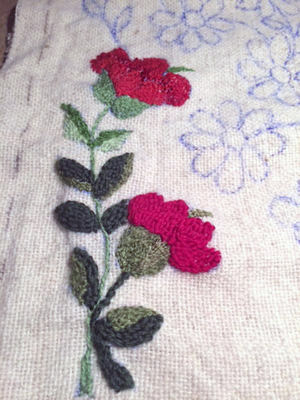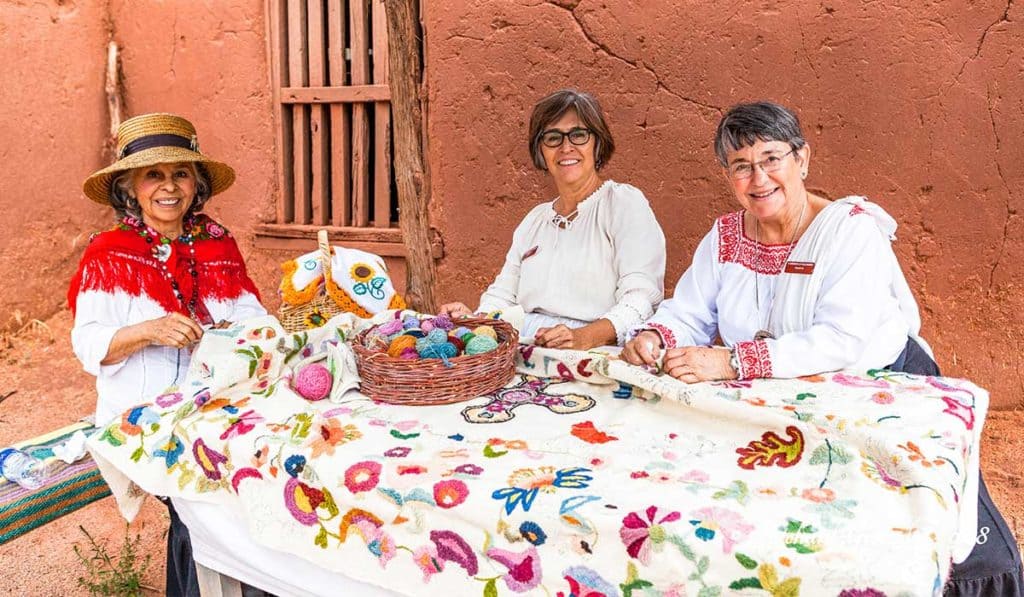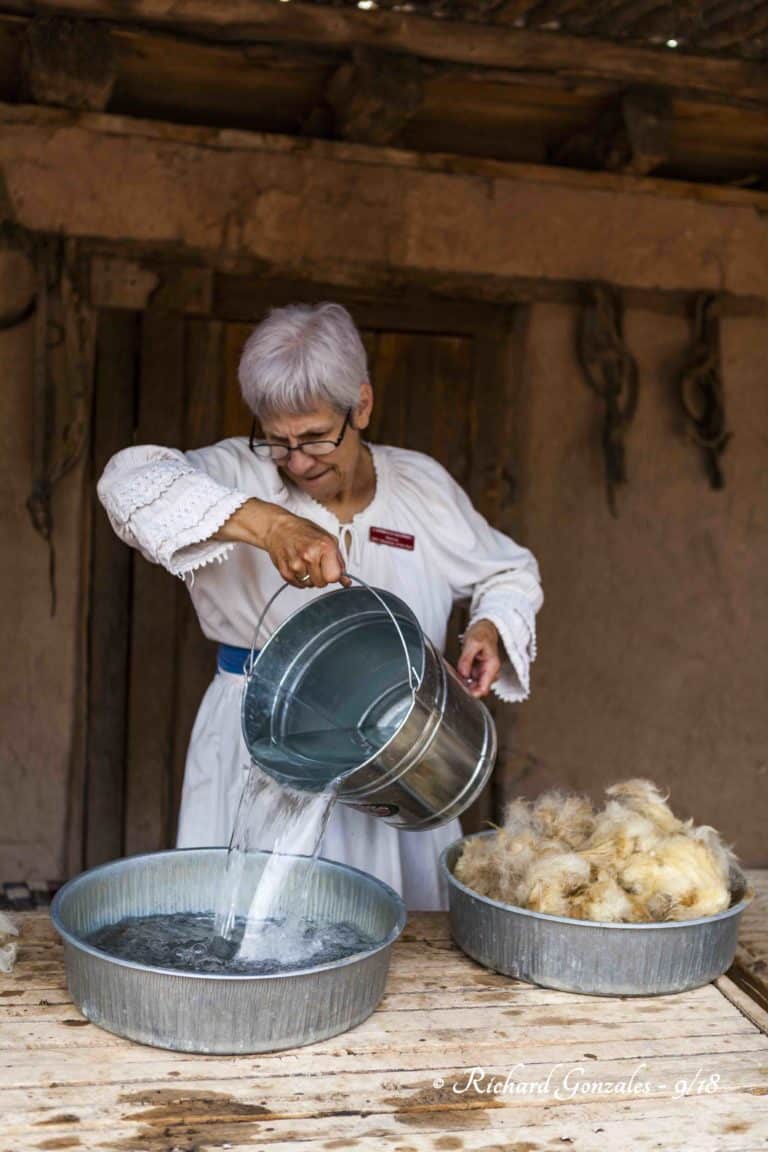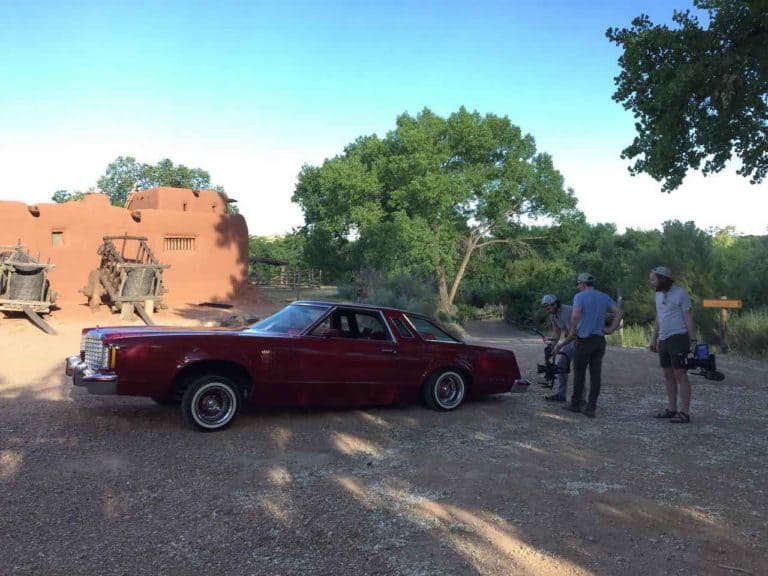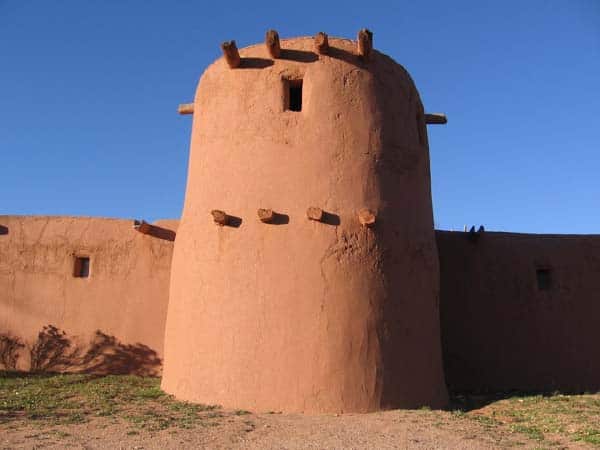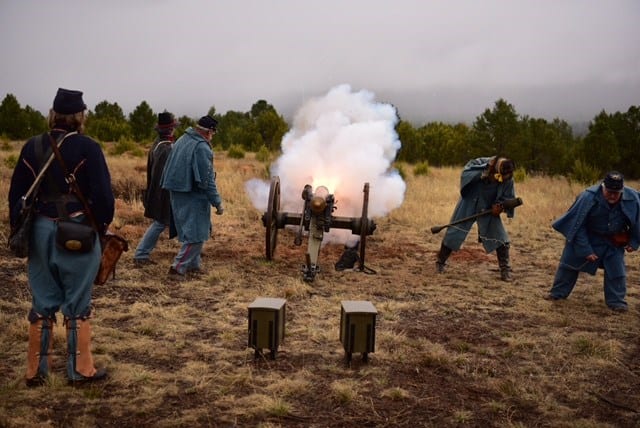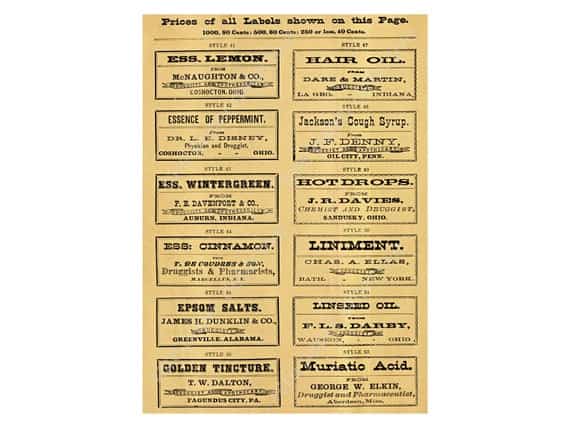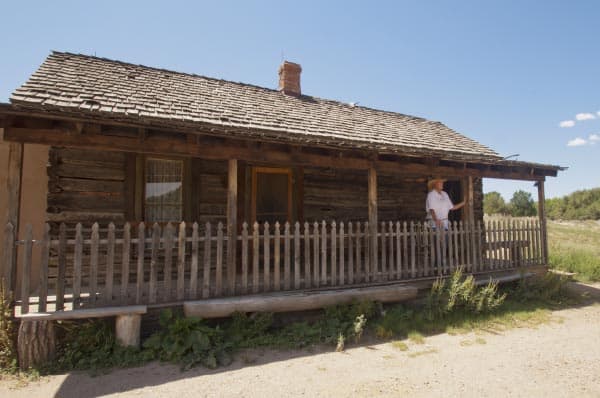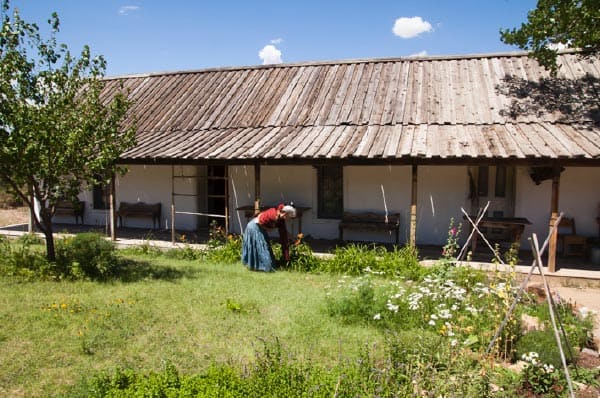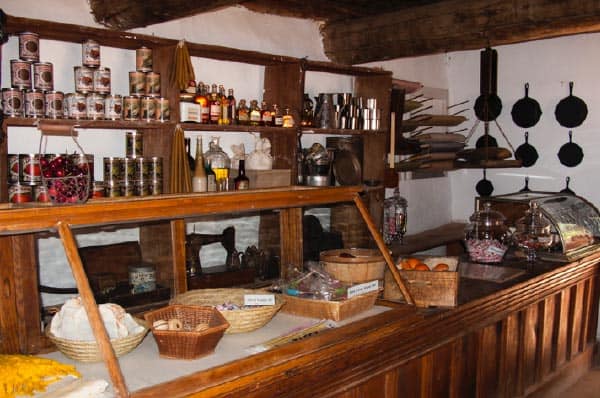Volunteer Resources
All
- All
- Building Narratives
- Costumes
- General History
- Las Golondrinas Library
- Living History Interpretation
Weaving & Colcha
New Mexican traditional weaving is alive and thriving at El Rancho de las Golondrinas living history museum. Weavers meet at Las Golondrinas almost everyday from 9:30am to 4pm to demonstrate for visitors, enjoy each others' company, perfect their skills and learn new techniques. Men and women who would like to learn...
TinyCat: The Las Golondrinas Library
TinyCat: Directions for Use Introducing the Las Golondrinas Library Call Number System Suggested Reading List Search the Las Golondrinas Library Search Help
Yucca Root Soap
Yucca has certainly earned its place among state symbols as it has many prominent uses. The Pueblos used the Yucca plant to make things like mats, shoes, rope, and as it turns out, soap! Yucca Soap
Las Golondrinas Production History
Did you know that New Mexico film history predates New Mexico's establishment as a state? Shot in 1898, one of the first films made on the newly developed Edison Camera, "Indian Day School" was a 50 second "moving picture" depiction of children exiting a schoolhouse at Isleta Pueblo, New Mexico!...
Living History
So What is Living History? A simulation of life in another time – Jay Anderson For research, interpretation, and play – Jay Anderson A history that does work in the world and influences the course of history – Carl Becker A form of theater in which participants use performance to...
Santa Fe’s Native Market
Passionately dedicated to the preservation of New Mexico's culture and heritage, El Rancho de las Golondrinas founder, Mrs. Leonora Curtin Paloheimo, started Native Market during the Great Depression in 1934 as a commercial outlet and platform for New Mexican artisans and craftsmen to showcase and sell their work. A visit...
The Battle at Glorieta Pass
Eleven states seceded from the Union in 1861, forming the Confederate States of America and sparking the American Civil War. While the South had focused on building an agrarian society, the North had invested in industrial expansion and was better equipped for military campaigns. The Confederacy was desperately short of...
Moorish Influences on Spain
The Moors, hailing from northern Africa, occupied southern Spain for seven centuries. They had a substantial influence on the people of Spain, largely influencing language, intellectual and artistic culture, agriculture and architecture. Though the Spanish were eventually able to drive the Moors out of the last stronghold at Granada...
19th Century Medicine
Out of necessity, general stores like La Tiendita here at Las Golondrinas, got their start during the colonial period for the many pioneers who lived on the fringes of the frontier, far from any urban center. Many owners of these mercantiles began as traveling peddlers and once they had the...
El Camino Real
During the Spanish Colonial Period (1598-1821), New Mexico's main artery of connection to the outside world was El Camino Real, also known as the Royal Road or the King's Highway, which connected Santa Fe with Mexico City 1,200 miles away. The story of El Camino Real lasted more than 220...
Education in New Mexico and the Ratón Schoolhouse
This interpretation will concentrate upon the development of education in New Mexico from the 18th century through the late 19th century. Education was vital to New Mexico and there was a constant need for educators, Formal education at missions for Native populations. Formal education for Spanish settlers Informal education in...
Sierra Village
The Sierra (mountain) Village is comprised of buildings that are not original to the ranch and are arranged to show what life was like in the high sierras of Northern New Mexico. This particular group of homes and outbuildings depicts a family plot of land comprised of a young couple...
La Tiendita, General Store
This little store would have served the needs of both ranch and local residents. After the opening of the Old Santa Fe Trail, residents were able to purchase some of the goods that had been previously absent or difficult to obtain—particularly tools and building materials. With the coming of the...

